Ijraset Journal For Research in Applied Science and Engineering Technology
- Home / Ijraset
- On This Page
- Abstract
- Introduction
- Conclusion
- References
- Copyright
Nano Filtration Techniques in Waste Water Treatment
Authors: Shraddha Shivappa Pawar, Vinamratha V, Tasso Siya
DOI Link: https://doi.org/10.22214/ijraset.2024.64592
Certificate: View Certificate
Abstract
Nano filters, based on nanotechnology to improve filtration processes, offer sophisticated solutions for contaminant removal from liquids and gases. The filters in this group include polymeric membranes with a pore size of 1-100 nanometres, ceramic membranes that are tolerant to chemicals, and carbon nanotube and graphene-based filters with advanced permeability and selectivity. Recently, differentiated nanomaterials have been developed to make composite membranes with improved performance and durability. However, NF have disadvantages such as membrane fouling and high production costs. In this respect, research is currently being done to come up with solutions to the challenges, optimize the integration of nanomaterials, and realize application possibilities in water treatment, air purification, and industrial processes. On the whole, NF stand as the radical improvement filtration technology has so far achieved, and further research is bound to make them more efficient and cheaper About 17–19 million people in the world lack access to clean water. It is estimated that about 3.4 million people die every year from water scarcity, sanitation, and hygiene-related problems out of which 99% of deaths occur in developing countries. In recent years, water contamination has become a global environmental concern. The paper provides insights into advancements in wastewater treatment through nano-filters. The paper focuses on evaluating the effectiveness of nanomembranes in removing containments such as inorganic salts, organic compounds, and heavy metals. Additionally, the paper gives information about performance based on a comparison of the tractional filters and RO in terms of flexibility, durability, efficiency, and cost-effectiveness. Furthermore, it explores the application of NF in industries such as textile, pharmaceuticals, and agriculture and evaluates the versatility and effectiveness in these sectors.
Introduction
I. INTRODUCTION
India is a developing country encountering a rapid increase in industrial and agricultural activities contributing to water pollution, untreated waste from the factories and agriculture is directly let into the streams, lakes, and seas which leads to contamination of water which makes it unsafe for drinking and usage purposes. As the demand for clean water increases, wastewater should be treated more effectively and efficiently. In India, conventional treatment plants are used to treat water which is less efficient and not cost effective.
From serval decades the use of Nanomembrane-based technology has grown on India, one of the nanotechnologies is highlighted in this is Nano filters (NF).
Nano filters are a type of advanced membrane technology used for treating water because it is more efficient and cost-effective than conventional technology. NF membrane can filter out organic compounds and organic salts makes more efficient in various industrial such as textile, pharmaceuticals and agricultural. Nano filters are made of polymeric or ceramic materials which enhances their filter capabilities and cost effective. Nanomaterials offers high chemical reactivity, durability against mechanical stress and large surface area for better absorption and adsorption of molecules.
II. BACKGROUND OF THE REVIEW
Membrane filtration technology is important component of treatment plant for purification of water containing organic compounds, inorganic salts, microbes, heavy metals and retaining nutrients.
The traditional membrane such as microfilters and ultrafilters, typically used for removal or large debris and particles and less efficient to remove smaller particles. Reverse osmosis RO is more efficient to remove small particle but requires intensive energy and more cost to treat water. For the emerging challenges of water scarcity and water pollution nano filters provides bridge between the traditional filters and RO as more efficient and cost effective.
III. LITERATURE REVIEW
A. A Comprehensive Review Of Recent Advances In Nanofiltration Membranes For Heavy Metal
Zahra Samavatia, Alireza Samavatib, Pei Sean Goha, Ahmad Fauzi Ismaila, Mohd Sohaimi Abdullaha a Advanced Membrane Technology Research Centre, University Technology Malaysia (UTM), 81310 Johor Bahru,
Nanotechnology is an advanced technology which is providing favourable solutions due to its extraordinary characteristics like large surface area, low-cost maintenance, and reuse, etc. By considering the past few decades, the advancement in the field of nanotechnology has increased and are trying to develop new nano sorbents, nanostructured catalytic membranes, efficient photocatalysts, bioactive nanoparticles, and new filtration regimes and also a bibliometric approach applied to bring the indigenous technologies available.
The methodology includes a detailed examination of the materials and techniques used in the modification and enhancement of nanofiltration (NF) membranes for the removal of heavy metals from wastewater. The advanced materials used are Polysulfide (PSU), Polyether sulfones (PES), Polyamides (PA), PVC, PVDF, and Cellulose Acetate.
Polysulfide (PSU) has high thermal stability, good mechanical strength, and chemical resistance and can be commonly used as a base material for membrane fabrication due to its robustness.
Polyether sulfones (PES) which is Similar to PSU but with improved permeability and fouling resistance which is Widely used in water treatment membranes.
Polyamides (PA) have High rejection rates for salts and organic solutes, excellent chemical resistance, and are Used in thin-film composite (TFC) membranes for various separation processes, and a few other materials like PVC, PVDF, and Cellulose Acetate are Utilized based on specific requirements for mechanical strength, chemical resistance, and hydrophilicity.
1) Techniques for Enhancing NF Membranes
a) Interfacial Polymerization (IP)
Process: A chemical reaction occurs at the interface of two immiscible phases, usually involving a polyamine and a polyacyl chloride, to form a thin polyamide layer.
Benefits: Produces thin-film composite membranes with high selectivity and permeability.
Challenges: Controlling the thickness and uniformity of the polyamide layer can be difficult.
b) Grafting
Process: Functional groups or polymers are grafted onto the membrane surface to enhance specific properties such as hydrophilicity or anti-fouling characteristics.
Benefits: Improves membrane performance by reducing fouling and enhancing selectivity.
Challenges: Ensuring stable attachment and uniform distribution of grafted materials.
c) Addition of Nanofillers
Types: Incorporation of nanomaterials like graphene oxide, carbon nanotubes, and metal-organic frameworks (MOFs).
Benefits: Enhances mechanical strength, permeability, and selectivity of the membranes. Nanofillers can also provide additional functionalities such as anti-bacterial properties.
Challenges: Achieving uniform dispersion and stable integration of nanofillers into the membrane matrix.
2) Performance Evaluation
The review discusses the performance of modified NF membranes in terms of their ability to reject heavy metals, permeability, and resistance to fouling.
- Electrostatic Charge Induction: This is highlighted as a key factor enabling high rejection rates of heavy metals by creating repulsive forces between the membrane surface and the metal ions.
- Comparative Analysis
- The review provides a comparative analysis of different NF membranes and modification techniques, highlighting their advantages and limitations.
- Historical Development: The evolution of NF membranes from simple reverse osmosis membranes to advanced nanocomposite membranes is traced, showing the progress in materials and techniques used for membrane enhancement.
By employing these materials and techniques, the review aims to showcase the significant advancements made in the field of NF membranes, particularly for the application of heavy metal removal from wastewater, demonstrating the effectiveness of innovative approaches in improving membrane performance and addressing environmental challenges.
B. Polymer Nanocomposite Membrane for Wastewater Treatment.
Sivasubramani Divya and Tae Hwan Oh School of Chemical Engineering, Yeungnam University, Gyeongsan 712-749, Korea
Correspondence: divi.fysics@gmail.com ordivi.fysics@yu.ac.kr (S.D.); taehwanoh@ynu.ac.kr (T.H.O.)
Blend- and film-based nanocomposites are two types of polymer nanocomposite membranes. Nanoparticles and polymers are dispersed in casting solutions in blended nanocomposite membranes, and their applications are listed in Table 1.
Synthesized a zeolitic imidazole framework-8 (ZIF- 8) incorporated in a polymer nanocomposite membrane for the desalination of brackish and seawater. In terms of water permeation, imperfections in the ZIF-8 could prevent water molecules from transporting resistance while they pass through the nanoparticles. The water flux value of the composite membrane is higher than that of the pure thin-film composite membrane (TFN). Therefore, TFN membranes containing dZIF-8 can be used for long-term RO desalination without significantly degrading their performance.
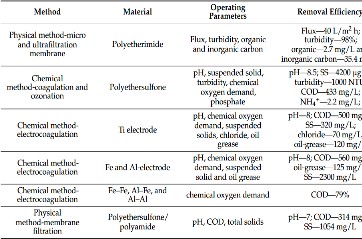
Fig 3.1.1. Water treatment in automobile industries

Fig 3.1.2.Treatment of industrial waste water
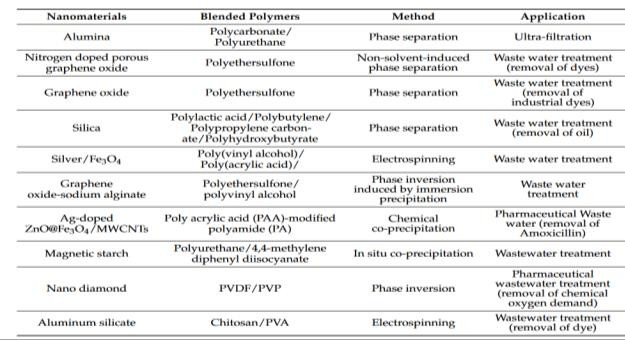
Fig 3.1.3 Application of blended polymer nanocomposite
The recycling of water has been working in some countries; for example, Belgium consumes 0.3% of the several million liters used widely in the carwash industry; Germany and Austria utilize 80% of the water produced by the recycling process, and European countries consume an average of 70 L per car.
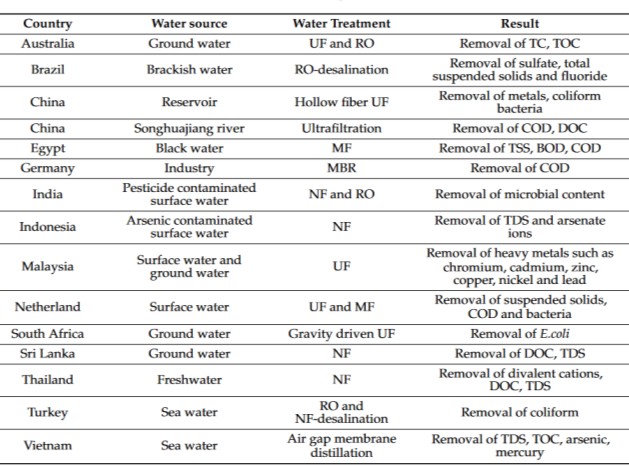
Fig 3.1.4 Water usage in different countries
C. Nanotechnology And Water Purification: Indian Know-How And Challenges
Madhulika Bhati 1 & Radhika Rai 1
Received: 14 June 2017 / Accepted: 1 September 2017 Springer-Verlag GmbH Germany 2017
Nanotechnologies will create immense environmental benefits in terms of water management and treatment by convalescing filtering, decontamination, desalination, conservation, recycling, sewerage systems and developing sensitive analytics or monitoring systems. Among the numerous concepts proposed, most promising to the date includes nanotechnology applications. Nanofiltration systems can be equipped with carbon nanotubes, zeolites, nanofibers and nano sponges; nano catalysts and magnetic nanoparticles can catalytically attack chemical contaminant sand toxins to degrade them, magnetic nanoparticles can remove metals due to their interaction capabilities. Sensitivity and selectivity of sensor can be increased by applying nanomaterial probes in water monitoring devices.
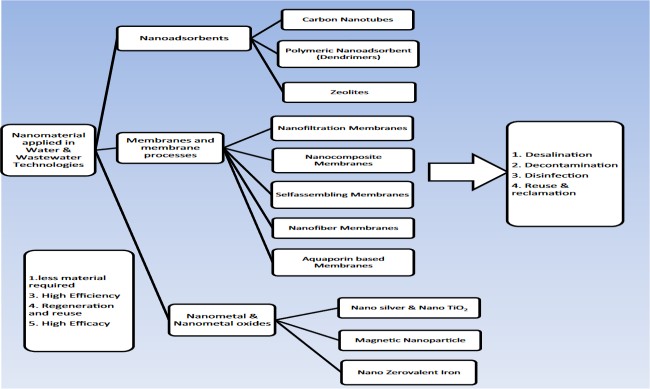
Fig 3.2.1 Nanomaterial applications in water and wastewater technologies. Source: Created by authors from various sources (Shannon et al. 2010; Iika Gehrke et al. 2015).
D. Nanotechnology For Sustainable Water Treatment
Asha P Tom Mater. Today Proc 10, 16-78, 2021
The application of nanotechnology in water treat extends to various fields like nanoscale filtration techniques, adsorption of pollutants on nanoparticles (NPs) and break down of contaminants by nanoparticle catalysis. A series of nano materials such as carbon nanotubes, cellulosic nanomaterials, polymer nanocomposites, metallic NPs, nanozeolites, grapheme, grapheme oxide, carbon and graphene quantum dots have been developed and employed for water and waste water treatment.
1) Sustainable Waste Water Treatment- nanotechnology
Here comes the importance of nanotechnology based photocatalysis as a green and sustainable technology for the complete mineralization of hazardous organic chemicals to water, carbon dioxide and simple mineral acids. The nanomaterials prepared by green strategies can be utilized as promising resources for photocatalysis in water purification applications.
Photocatalysis is a light-induced reaction, which is enhanced by the presence of a catalyst. The semiconductor NPs and nanocomposites like TiO2, ZnO, ZnS, Zn-CeO2, Si-Ti and CdS-TiO 2 has been found to be effective for photocatalytic degradation of organic contaminants. The main advantage of the nanosized semiconductor particles is the quantum- size effect, which increases the band gap energy with a decrease in the size. When photons with high band gap energy strike the surface of nanosized semiconductor, the valence electrons get excited and jump to the conduction band. The excited NPs undergo charge separation and oxidize the organics at the semiconductor surface. which is making it sustainable over conventional water treatment methods. Polyethylene glycol (PEG) modified cellulose nanocrystals composite has been found to be effective for adsorption of pharmaceutical compounds from aqueous solutions. This composite was suitable for removal of hydrophobic drugs in water.
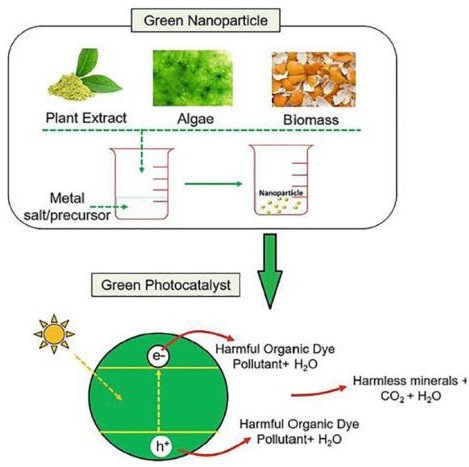
Fig 3.3.1 Schematic illustration of photocatalytic dye pollutant degradation under light illumination using green-fabricated NP
E. Nanotechnological Methodology for Treatment of Waste Water
L. Nageswara Rao, Department of Chemical Engineering, R.V.R.& J.C.College of Engineering (A), Chowdavaram, Guntur, Andhra Pradesh,India. Corres.author: lnrao1978@gmail.com
Water is basic need of human being. Due to increase in the pollution, there is more demand of pure water for both quantitative and qualitative purpose. Science has been applied to develop tools and technology to provide clean water. Past decades the nanotechnology has been used to provide clean water. Various methods such as Photolysis, Nano filtration, Adsorption and Electrochemical oxidation involve the use of Tio2, Zno, ceramic membranes, nanowire membranes, polymer membranes, carbon nanotubes, submicron Nano power, metal oxides, magnetic nanoparticles, nanostructured boron doped diamond are used to resolve or greatly diminish problems involving water quality in natural environment.
Conventional water treatment has different stages like pre-treatment to remove suspended solids, coagulation and flocculation is done to remove precipitate by sedimentation lastly carried out by disinfection, aeration, and filtration. These processes don’t remove dissolved salts and some soluble inorganic and organic substance. Pressure driven membrane technology like nano filters is used to treat water at desired quality. The membrane is a barrier that separates two homogenous phases. It allows some solutes to pass through but rejects the permeation of others. It achieves the separation of solutes of a fluid mixture when a driving force is applied. The force could be a pressure difference (Æp), concentration gradient (Æc), temperature difference (ÆT), or electrical potential difference (ÆE). The basis of separation is that each membrane has unique characteristics for the selective permeation and rejection of different. Distillation process where raw water is treated by thermal or membrane process Nanofiltrations filters some salts. Nanotechnology is used in Israel for the desalination of saline waters4. The Grand Water Research Institute of the Israel Institute of Technology is working with corporate and other partners to treat salt water and create fresh sources for drinking water and irrigation.
1) Suitability of nano Membrane Technologies
Nanotechnology to water treatment devices appears to be driven by several factors including, but not limited to, reduced costs, improved ability to selectively remove contaminants, durability, and size of device. Nanofiltration membrane acts as a physical barriers and selectively remove smaller particulates and harmful pollutants and retains nutrients in water.
The filters and membranes are made from a variety of nanomaterials including carbon nanotubes, nanoporous ceramics (clays), dendrimers, zeolites, nanofibers and nano sponges. Multi–tasking filtration systems could be developed to detect, separate out, and/or detoxify a contaminant. It is anticipated that in time such membranes and filters will become commonplace in detecting and removing viruses from water as the current research in this direction indicates, nanomembrane whose life span ranges between five and six years.
2) Conclusion
Nanotechnology is also being looked upon to provide an economical, convenient and eco-friendly means of wastewater remediation. Different types of nanoparticles such as nano sized metals, metal oxides, zero valent ions, nano-filtration membranes have proven effective in detection, removal and /or destruction of contaminates.
F. Secondary Raw Materials from Agroindustrial waste by-products and Waste Through nanofilters.
J. M. Ochando-Pulido1, R. Fragoso2 , A. Macedo2, A.R. Carvalho2 and E. Duarte2
Department of Chemical Engineering, University of Granada, Av. Fuentenueva, 18071, Granada, Spain 1. LEAF - Linking Landscape, Environment, Agriculture and Food, Instituto Superior de Agronomia, Universidade de Lisboa, Tapada da Ajuda, 1349-017, Lisboa, Portugal
Circular economy is used to promote product life cycles loop closing due to a rise in the wastes and a rise in water demand more than 70% worldwide with greater recycling and reusing. High valued products or compounds recovering by nano filters is an example of agro-industrial by-products and waste streams. They are characterized by easier design, lower costs, and are more sustainable and energy- saving—up to 20-30% compared to RO filters that use lower transmembrane pressure. NF technology offers more recovery of high valuable compounds from wastes.
Particularly, the membrane process has gained more importance for groundwater purification at the expense of many traditional processes. In addition, it has also become very important for reclamation of wastewater streams driven by agriculture industries. Membrane technologies can be used for recovering fibres, pectin, sugars, proteins, and phenolic compounds as useful compounds from agro- industrial waste. Specific selectivity towards small solutes lowers energy consumption by NF membranes, which has boosted their use as tertiary treatment in integrated wastewater treatment processes.
NF member methodology for the purification of olive oil mill wastewater.
Nani filters membranes are widely used in treating olive oil mill waste water due to their capacity to selectively separate and retain valuable compounds, particularly phenolic compounds, while reducing organic contaminations. This makes NF advantageous due to the high selectivity, low energy consumption, and sustainability of its integration into large treatment plants. According to the paper, with NF, a 95% rejection rate of phenolic compounds is achieved.
G. Application Of Nano Technology In Waste Water Treatment
Tanujjal Bora and Joydeep Dutta∗
Water Research Center, Chair in Nanotechnology, Sultan Qaboos University.
The article gives insights of the how Goble water crisis worsened by human activities, which lead to shortage of clean drinking water in developing countries traditional water treatment are costly and inefficient which make them difficult to implement for treating of waste water. Nano technology offers potential solution by use of nano materials with unique properties that are more effective and affordable for cleaning in waste water treatment. The paper shows how nano catalysts and nanomembranes replace traditional methods of treatment.
Application of nano filters in waste water treatment plants
NF is a wide and membrane-based filtration method that has been applied vastly in water purification and treatment. NF utilizes pressure-driven methods of separation of containments from water, leveraging its unique properties of nanofillers.
Characteristics of NF
Membrane properties: NF membranes are designed with a pore size ranging from 1 to 5 nanometres; it allows rejecting most of the solutes while allowing the passage of water molecules. The properties of the membrane range between the non-porous reverse osmosis membrane and porous UF membrane, while the NF membrane makes a highly effective separation process.
Separation mechanism: It is divided into two main categories size exclusion and electrostatic interaction. Size exclusion: In this process, the small pores of the NF membrane ensure the block of solute particles and passage of water and small molecules. Electrostatic interaction process: The NF membrane Fig 4.1 Schematic representation of water softening by nano filtration process
H. Future Of Nanomaterials In Wastewater Treatment
Fareeha Asghar and Ayesha Mushtaq Department of Chemistry, University of Agriculture Faisalabad, Pakistan
1) Application of NF
Nanofiltration (NF) is highly effective in wastewater treatment since it can remove a quite wide range of contaminants from organic compounds, inorganic possess fixed surface charge, which enables selective binding and rejection of charged species. Monovalent passes through, and multivalent retains. NF is highly effective for water softening.
Energy efficiency: NF are operated at lower pressure 7 to 30 ATM compared to RO 20 to 100 ATM. Lower pressure requires low energy consumption making NF more stainable option for large scale water treatment plants.
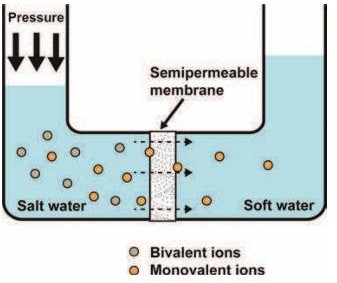
Fig 3.7.1 Filtration using semipermiable membrane
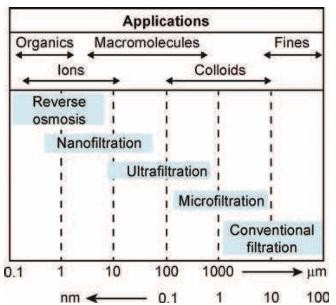
Fig 3.7.2 Different filters for water and waste water treatment Membrane-based filtration techniques with effective size and types of particles typically removed by the membrane.
Salts, and harmful microbes. This versatility finds NF applications in the textile, pharmaceutical, dairy, and petrochemical industries. NF membranes are mostly fabricated from polymeric materials, which are comparatively easy to fabricate and fairly
Flexible and cheap but which also show reduced chemical resistance and a higher tendency to foul. At the same time, inorganic ceramic membranes exhibit improved chemical and thermal resistance; they, however, are expensive and not that flexible. Through membrane fabrication, nanomaterials introduced in NF have shown improved performance with enhanced flexibility and durability, increasing cost-effectiveness and therefore eliminating the classic limitations of polymeric and ceramic membranes.
The paper thus presents insights into a promising solution involving the use of NF for wastewater treatment. NF ensures effective contamination removal. NF requires less energy and is thus cost- effective and easily combinable with other processes in wastewater treatment plants. This approach is very crucial in addressing the shortage of clean water, especially in developing countries.
The shortage of clean drinking water, worsened by environmental factors, drives the need for innovative wastewater purification technologies. Nanomaterials present an excellent way forward because they are non-toxic and efficient, with low costs of operation. This review examines the most recent developments in nano-based treatments for wastewater, pointing out some advantages and the challenges in synthesizing these materials.
Nanomaterials, principally nano-photocatalysts, have developed as workable and green solutions due to their recyclability and outstanding capabilities in the purification of water. Classic techniques, like adsorption, are being upgraded with nanomaterials to remove hazardous pollutants efficiently. In addition, the future prospects for natural, biodegradable nanomaterials—such as cellulose— and photocatalytic technologies are quite bright for the enhancement of water treatment processes.
2) More extended application of NF membrane
The CNTs have largely enhanced the permeability and selectivity of the polymeric membranes, making them a very efficient material in treating wastewater. Their integration will enhance the anti-fouling characteristics of the membranes to prevent clogging, thus increasing the lifetime. As a result, the CNT will help in the effective separation of nanoparticles, such as TiO2, through simple filtration processes other than photocatalysis. This development underlines the benefits derived from making CNTs part of the membrane technology for the purposes of improved filtration efficiency and durability.
3) Nano-filtration can be done using two process PAN nanofiber and Nano silver
Polyacrylonitrile, commonly referred to as PAN, is one of the common materials used in making hydrophilic nanofiber membranes in treating wastewater due to its high capacity in filtering pollutants and bacteria. Modifications, such as coating PAN with polyethyleneimine diepoxy EGdGE, give the fibres a positive charge, hence enhancing their capacity for adsorption of negatively charged viruses. Other reasons include that coating PAN with ZnO-PVP improved the capacity of the composite in removing organic materials, while the incorporation of α-Fe2O3 nanoparticles increased the hydrophilicity, hence the adsorption sites for arsenic removal. Moreover, Ag NPs are applied due to their antibacterial properties. They can kill microorganisms, hence increasing the disinfection process involved in wastewater treatment, but they have a limitation of long-term use because of their aggregation problems.
4) Key challenges and issues of NF
Nanotechnology has remarkably developed the purification process of wastewater, but there are some challenges that are still faced. Key issues include the problem of recovering or separating nano adsorbents after their use, fouling, and shrinkage of nanofibers impacting their mechanical properties and durability. While surface modifications to photocatalysts like TiO2 are useful, they often cover porous sites and reduce effectiveness. Another set of issues relates to the fact that most laboratory experiments do not mimic real- life conditions and toxicities of nanomaterials remain poorly understood. Hence, research into these concerns is of utter importance to tackle these issues of nanomaterial toxicity in order to commercialize nanotechnology into wastewater treatment.
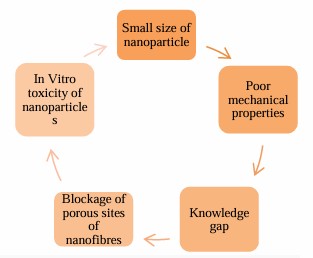
Fig 3.8.1 Challenges associated with nanomaterials
Recyclable, affordable, and renewable resources have been focused on in recent developments of nanotechnology to extract nanomaterials for industrial wastewater treatment.
Biological methods combined with nanotechnology provide a more environmentally friendly and effective route to enhance pollutant degradation. For industrial application, recyclability and reusability of nanomaterials are very important. Therefore, in the near future, research on novel immobilization and separation techniques like magnetic separation and improvement of nanoparticle surface modification must be taken up to solve the existing challenges. The field of nanotechnology has huge potential where present explorations are likely to discover new and innovating materials for application in wastewater treatment.
I. Nanotechnology-Enabled Water Treatment Strategies
Sandeep Kumar, Wandit Ahlawat, Gaurav Bhanjana, Solmaz Heydarifard, Mousa M Nazhad, Neeraj Dilbaghi PMID: 24749460 DOI:10.1166/jnn.2014.9050
Water is scarce in the world, with just only 2.5% of the water on this planet being fresh and available for human use. The maximum of it can be reached by the process of desalination, which means the removal of salts from the saline water. However, it is traditionally costly and energy-intensive. Major efforts in making desalination more efficient and affordable are from recent advances in nanotechnology by developing methods such as nanofiltration and membrane engineering. These new technologies can give a more sustainable and cost-effective solution to produce fresh water in order to satisfy the demand. Desalination technologies use mechanical, thermal, electrical, and chemical procedures for the removal of salts and other impurities from water. The leading desalination method is Reverse Osmosis, which uses membranes to filter seawater. The thermal process imitates the natural process of evaporation. Other major groups are electrical methods, such as electrodialysis, and chemical ion exchange. Innovations in membrane nanotechnology and advances in the fabrication of aquaporins, though with challenges in brine disposal and membrane fouling, continue to make the units more effective and reduce cost. Solar desalination provides such a feasible solution, particularly for areas far from general public utilities, although its requirement for space is high.
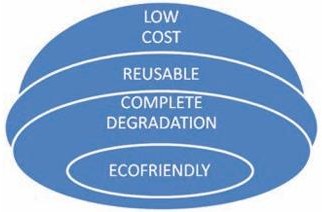
Fig 3.9.1 Advantages of photocatalytic degradation over other methods
The paper reports some insight into how current nanotechnology and photocatalysis research are changing water treatment and desalting processes toward efficiency and sustainability. With growing pressure due to worldwide water scarcity, the new innovations in nanofiltration, membrane engineering, and photocatalysis at the nanoscale are all at the forefront toward making the world a place where clean, safe, and inexpensive water is available.
These advancements made desalination and contaminants removal more efficient while tackling energy consumption challenges and those related to the environment. As these technologies continue to mature, their impact will significantly work to mitigate the global water crisis and support a more sustainable future. Before the operation of any desalination process, such as RO, FO, NF, or ED, the feed water needs to be pretreated for impurities and scaling, including coagulation, filtration, and disinfection steps. Post-treatment also may involve pH adjustment, mineral additions, and water disinfection, to satisfy the quality requirements of the water for its eventual use. This result is that seawater desalination is increasingly becoming a real option in most freshwater-deficient areas around the world.
Nanoscale photocatalysis is consequently a robust technology of the degradation of dangerous organic contaminants of wastewater, such as pesticides, dyes, and phenols. Most classical methods of chemical oxidation and adsorption are generally ineffective; they lead to secondary pollution. Photocatalysis is light-dependent; catalysts include TiO? and ZnO. It used to break down these poisons into nontoxic substances, for instance into H2O and CO2. Anatase TiO? is powerful, although it is inefficient, particularly when the UV light needs to be present. Better doping levels and the importance of nanocomposites enhance the photocatalytic efficiency to bring the degradation of pollutants to action even under visible light.
J. Role of Nanotechnology In Water Treatment And Purification: Potential Applications
Sayan Bhattacharya1#*, Indranil Saha2, 4,5*, Aniruddha Mukhopadhyay1, Dhrubajyoti Chattopadhyay3, Uday Chand Ghosh4 and Debashis Chatterjee5
Department of Environmental Science, University of Calcutta, Kolkata, India
Dept. of Chemistry, Sripat Singh College, Jiaganj, West Bengal, India.
Nano absorbents have been extremely useful in water treatment owing to their big surface area and the possibility of chemical modification with active sites targeting certain pollutants. For example, hematite nanoparticles exhibit higher surface reactivity and thus better performance in copper ion adsorption. The same principle works for CeO2- CNTs regarding arsenic adsorption, akageneite nanocrystals improving metal removal, and nanocrystalline TiO2 for efficient arsenic removal. Among the iron-based nanoparticles, bimetallic nanoparticles have also been utilized, including iron-nickel and iron-copper, in the degradation of various pollutants, including chlorinated compounds and arsenic. For example, it can photo-oxidize toxic arsenic, As(III), to less harmful forms, As(V), which can be easily removed by TiO2. Graphene is a promising new material in water purification because of its high surface area and special structure. Graphene oxide and reduced graphene oxide composites prove to be active for the removal of arsenic, while exerting complementary antibacterial properties that could be useful to avoid biofilm growth on filters. Improvements to nanomaterials are proving effective at enhancing traditional water treatments. Nanofiltration (NF): NF is a low-pressure-driven membrane separation process, and the diameter of particles ranges from 0.001 to 0.1 micrometers in diameter. Pore diameters of NF membranes vary from 0.2 to 4 nanometres and turbidity, microorganisms, as well as inorganic ions like calcium and sodium, are effectively removed. They find applications in softening groundwater, removal of dissolved organic matter and trace pollutants from surface water, in wastewater treatments, and pre-treatment of sea water for desalination. NF has been shown by various studies to be capable of removing cations, natural organic matter, biological contaminants, organic pollutants, nitrates, and arsenic from water sources. This filtration technology has also shown success in brackish water desalination and in improving the qualities of large water distribution systems. Carbon nanotube filters form a novel class of filters characterized by hollow cylindrical geometries with walls made up of radially aligned carbon nanotubes. Such a filter effectively removes bacteria like Escherichia coli and Staphylococcus aureus from polluted water. Besides, filtration with this kind of filter can easily and safely be cleaned by ultrasonication and autoclaving, therefore making it reusable. Nanoceramic filters combine nano-alumina fibres with micro glass to create a material of high positive charge, which retains negatively charged particles. They are highly effective at removing viruses and bacteria, have a high capacity for particulates, experience minimal clogging, and can chemisorb dissolved heavy metals.
Nanoparticles propose great advances in water treatments, but at the same time, they present great challenges in their removal and environmental impact. Because of their small size, it is not possible to remove them by conventional techniques in wastewater treatment plants, for example, sedimentation and flocculation. Membrane filtration, like nanofiltration and reverse osmosis, is promising; however, complexity due to functionalized nanoparticles has to be overcome.
K. Biopolymeric Nanocomposites for Wastewater Remediation: An Overview On Recent Progress And Challenges
By Annu 1,ORCID,Mona Mittal 2,,Smriti Tripathi 2 and Dong Kil Shin, School of Mechanical
Engineering, Yeungnam University, 280-Daehak- ro, Gyeongsan 38541, Republic of Korea
Biopolymeric nanocomposites are composites of natural polymers with nano-sized particles and have drawn a high proportion of attention due to their very successful ecological application for the treatment of wastewater. Such biomaterials have been found to provide a number of advantages in terms of their huge adsorption capabilities, ion exchange, and degradation of pollutants. However, there are also a number of limitations that need to be addressed in order to fully leverage their potential at an industrial level on a large scale.
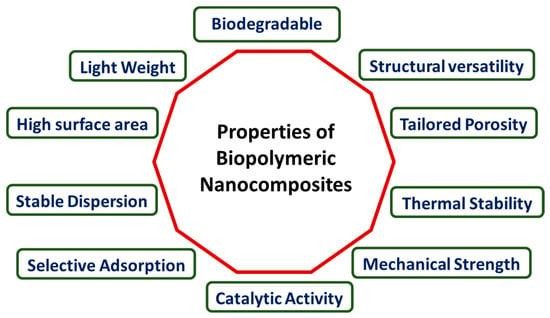
Fig 3.11.1 Properties of biopolymeric nano filters
These materials exhibit a wide effectiveness in a broad range of contaminant removal, starting from heavy metals, dyes, and organic pollutants, by means of mechanisms such as adsorption, photocatalysis, or ion exchange. For example, composites based on chitosan-Fe3O4 nanoparticles were characterized by high stability and reusability, maintaining their activity at high intensity during cycles. This type of reusability is of high importance for sustainable wastewater treatment because materials will last longer, with fewer needed replacements.
These advantages also have many disadvantages, including those that concern the problematic issues of biopolymeric nanocomposites. One of the main drawbacks is the scaling up of production in view of large-scale industrial applications. The synthesis methodologies are highly complicated and are involved in a high cost too, which makes them un- economical for practical application to treatment as compared to conventional methods. Furthermore, many of these nanocomposites, which are promising in contaminant targeting, have a restricted spectrum of performance against a wide range of pollutants. The versatility of these materials is obviously crucial for extended applications in various scenarios of wastewater treatment.
Another critical issue for use and further applications is the possibility of the regeneration of biopolymeric nanocomposites. While some materials can be regenerated and reused numerous times, sometimes the efficiency of such processes can differ, and in some cases the gradual loss of performance could take place. This calls for the need to develop more efficient and consistent methods of material regeneration in order to maximize the percentage of reuse and increasing the longevity. Aside from that, the lack of standard protocols so far with regard to methods of synthesis and application makes another big barrier for the wide use of such materials.
L. Innovations In Nanotechnology For Water Treatment
Ilka Gehrke, Andreas Geiser,Annette Somborn- Schulz Fraunhofer Institute for Environmental, Safety and Energy Technology UMSICHT, Osterfelder Straße 3, 46047 Oberhausen, Germany
During the past decades, the rapid growth of population, agricultural demands, and climate change have driven the demand for novel approaches toward water management and treatment. Due to the growing scarcity of water in most regions of the world, especially in arid and highly populated regions, several advanced technologies are currently under development in order to help solve such challenges. Of these, nanotechnology has become one of the promising approaches that improve efficiency and enhance the effectiveness of water and wastewater treatment processes.
Nanotechnology, due to its unique size-dependent properties, offers a suite of innovative materials and processes to revolutionize water and wastewater treatments. Nano-adsorbents, nanometals, and polymeric nano-adsorbents are made up of nanomaterials that can exhibit exceptionally high surface areas, reactivity, and sorption capabilities, which have been highly effective in removing contaminants from water. Special attributes of these materials indicate their particularly beneficial applications in heavy metal removal, organic pollutant adsorption, and microbial disinfection.
CNTs are one of the most studied nanomaterials in recent times, and many of their characteristics make them highly suitable for such applications: high adsorption capacity, antimicrobial action, reusability, high effectiveness for the removal of resistant contaminants, heavy metals, and pathogens. However, their wide use in water remediation is restricted due to high production costs, with the exception of point-of-use applications. There are also some polymeric nano- adsorbents that can offer bifunctionality, such as dendrimers, whereby organic compounds and heavy metals could be simultaneously removed. Nevertheless, because it has a complex production process, this has slowed down their application to commercial settings.
Specifically, zeolites have been applied in controlled release disinfection with incorporated silver ions, demonstrating effective microbial growth inhibition. Other nanometals and nanometal oxides such as TiO2 are also under consideration for water treatment due to their photocatalytic action and potential for contaminant removal including arsenic. These materials can be integrated into conventional water treatment systems to increase their efficiency and effectiveness.
M. Progress Of Nanocomposite Membranes For Water Treatment
Claudia Ursino, Roberto Castro-Muñoz, Enrico Drioli Lassaad Gzara,Mohammad H. Albeirutty and Alberto Figoli
Institute on Membrane Technology National Research Council, ITM-CNR, Via P. Bucci 17/C, 87036 Rende (CS), Italy
Department of Inorganic Technology, University of Chemistry and Technology Prague, Technická 5, 166 28 Prague 6, Czech Republic.
Various 2D materials and their nanocomposites have significantly improved the development of advanced membrane technologies in water treatment. These innovations owe to some unique properties of these materials, including high surface areas, distinct structural characteristics, and improved performance in desalination and purification processes.
1) 2D Materials and Nanocomposites
Graphene, due to its honeycomb lattice structure, has become one of the most popular materials in membrane technology. It allows water molecules to selectively pass through while keeping other larger contaminants out; hence, high rejection rates of salt in the range of 33-100% and effective removal of organic dyes have been reported, retention exceeding 99%. Other recent works also pointed out the efficiency of graphene in wastewater treatment- up to 99% removal of phthalates by composite membranes and noteworthy removal of pharmaceuticals.
Compared with MCM-41 and MCM-22, silicalite-1 offers significant enhancements in membrane performance. Zeolite membranes exhibit high permeate flux and high selectivity. Enhancement of the LbL assembly techniques leads to an increase in both water flux and solute rejection. Considering stability and performance, silicalite-1 showed quite good stability and performance compared with other types of zeolites such as NaA, because of its complete resistance toward acid and multivalent cations.
To improve the hydrophilicity and performance of polymeric membranes, Silicon Dioxide (SiO2) nanoparticles have been incorporated. It has been observed that these membranes with SiO2 fillers have demonstrated improved water flux and a reduction in fouling. For example, the addition of mesoporous silica exhibits high flux rates and efficient protein rejections. Further, SiO2 nanoparticles in thin film nanocomposite membranes have demonstrated improvement in both water permeability and salt rejection.
It has been observed that Al2O3 nanoparticles contribute to increased hydrophilicity and fouling resistance. The membranes with incorporated Al2O3 enable high water flux and low fouling due to the high density of hydrophilic centers on the surface, mitigating foulants adsorption.
Iron oxides, namely Fe2O3 and Fe3O4, are added primarily for their magnetic properties, among other advantages such as antifungal activity. The PES membranes incorporated with Fe3O4 nanoparticles showed excellent flux and dyes rejection. PVC membranes incorporated with Fe2O3 nanoparticles enhance the flux of water and rejection rates; this again shows that such types of nanoparticles are efficient in enhancing the performance of a membrane.
Conclusion
Improvements in the properties of the membrane, such as hydrophilicity, thermal stability, selectivity, and permeability, during the last decades may be further taken forward by fabricating polymer nanocomposite membranes. Despite the impressive progress that has been made in the filtration process, more research is still needed to overcome the challenges at hand. It was realized that the addition of nanomaterials to the polymer matrix enhances the chemical, mechanical, and thermal properties. However, these may lead to a few disadvantages, such as: the addition of nanomaterials can block the pathway of water flow; defects and non-selective porosity will be formed due to poor interaction between the polymer and nanoparticles, leading to the loss of selectivity and lowering of polymer chain packing; with poor dispersion of filler in the polymer matrix, there may be risks for aggregation and agglomeration of nanoparticles on the membrane surface or inner membrane surface, thus poor separation performance may arise. It is noticed that CSIR and IIT have contributed more in the area of nanotechnology applications in treating/purifying water sectors in India using different nanomaterials such as carbon and carbon- based material, novel titanium dioxide-graphene quantum dots (TiO2-GQDs) hybrid multifunctional material, nanocrystalline MgO and ZnO adsorbent products, activated carbon nanocomposites etc. to remove lead (Pb), arsenic (As), cadmium (Cd), chromium (Cr), nickel (Ni), tetrachloroethylene(PCE), trichloroethylene (TCE), nitrates, phosphates, sulphides, perchlorate, chlorinated hydrocarbons, trinitrotoluene, halogenated organics, pesticides, organo-arsenicals,. Besides that, a simple rapid sensitive and specific photo-luminance (PL) versatile probe was developed for the detection of mainly fluoride and arsenic pollutants in water. The contribution of NF technology in the circular economy through recycling and reusing high-value compounds from agro-industrial-based wastes is the insight given in this work. An NF membrane is typically characterized by low energy consumption with high selectivity. Applications are highlighted in the treatment of olive oil mill wastewater, whereby 95% reaction rate was obtained for the phenolic compounds. This underlines that NF is effective for the removal of organic impurities and valorisation of important resources, hence being a fairly sustainable and efficient alternative from a waste management point of view and resources conservation. Graphene, zeolites, SiO2, Al2O3, and Fe2O3 are among the new nanoparticles, which were integrated into the membranes for further development of water treatment processes. These materials confer higher hydrophilicity, low fouling, and better performance in desalination and purification to the membranes.
References
[1] Zahra Samavati a, Alireza Samavati b, Pei Sean Goh a, Ahmad Fauzi Ismail a, Mohd Sohaimi Abdullah https://doi.org/10.1016/j.cherd.2022.11.0 42- [2] School of Chemical Engineering, Yeungnam University, Gyeongsan 712- 749,Korea https://doi.org/10.3390/polym14091732- [3] Madhulika Bhati 1 & Radhika Rai 1 Received: 14 June 2017 / Accepted: 1 September 2017 Springer-Verlag GmbH Germany 2017 https://link.springer.com/article/10.1007/s 11356-017-0066-3- [4] Asha P Tom Mater. Today Proc 10, 16- 78, 2021 https://www.researchgate.net/publication/3 52287213_Nanotechnology_for_sustainab le_water_treatment_-_A_review- [5] L. Nageswara Rao, Department of Chemical Engineering, R.V.R.& J.C.College of Engineering (A), Chowdavaram, Guntur, Andhra Pradesh,India.Corres.author: lnrao1978@gmail.com https://www.researchgate.net/publication/2 87840797_Nanotechnological_methodolo gy_for_treatment_of_waste_water- [6] Asha P Tom Mater. Today Proc 10, 16- 78, 2021 https://www.researchgate.net/publication/3 21668497_Secondary_raw_materials_fro m_agroindustrial_byproducts_and_waste_ through_nanofiltration- [7] Tanujjal Bora and Joydeep Dutta Water Research Center, Chair in Nanotechnology, Sultan Qaboos University. https://doi.org/10.1016/j.watres.2012.09.0 58- [8] Fareeha Asghar and Ayesha Mushtaq Department of Chemistry, University of Agriculture Faisalabad, Pakistan https://www.iscientific.org/wp-content/uploads/2023/05/17-IJCBS-23-23- 23.pdf- [9] Nanotechnology-based water treatment strategies. Sandeep Kumar, Wandit Ahlawat, Gaurav Bhanjana, Solmaz Heydarifard, Mousa M Nazhad, Neeraj Dilbaghi PMID: 24749460 DOI: 10.1166/jnn.2014.9050 [10] Sayan Bhattacharya1#*, Indranil Saha2, 4,5*, Aniruddha Mukhopadhyay1, Dhrubajyoti Chattopadhyay3, Uday Chand Ghosh4 and Debashis Chatterjee5 [11] .Department of Environmental Science, University of Calcutta, Kolkata, India. Dept. of Chemistry, Sripat Singh College, Jiaganj, West Bengal, India. https://www.researchgate.net/publication/2 61994441_Role_of_nanotechnology_in_w ater_treatment_and_purification_Potential_applications_and_implications- [12] by Annu 1,ORCID,Mona Mittal 2,,Smriti Tripathi 2 and Dong Kil Shin, School of Mechanical Engineering, Yeungnam University, 280-Daehak-ro, Gyeongsan 38541, Republic of Korea https://www.mdpi.com/2073-4360/16/2/294- [13] Ilka Gehrke, Andreas Geiser,Annette Somborn-Schulz Fraunhofer Institute for Environmental, Safety and Energy Technology UMSICHT, Osterfelder Straße 3, 46047 Oberhausen, Germany https://www.ncbi.nlm.nih.gov/pmc/articles/PMC4294021/- [14] Claudia Ursino, Roberto Castro-Muñoz, Enrico Drioli Lassaad Gzara,Mohammad H. Albeirutty and Alberto Figoli https://www.ncbi.nlm.nih.gov/pmc/articles/PMC6027241/-
Copyright
Copyright © 2024 Shraddha Shivappa Pawar, Vinamratha V, Tasso Siya. This is an open access article distributed under the Creative Commons Attribution License, which permits unrestricted use, distribution, and reproduction in any medium, provided the original work is properly cited.

Download Paper
Paper Id : IJRASET64592
Publish Date : 2024-10-14
ISSN : 2321-9653
Publisher Name : IJRASET
DOI Link : Click Here
 Submit Paper Online
Submit Paper Online

